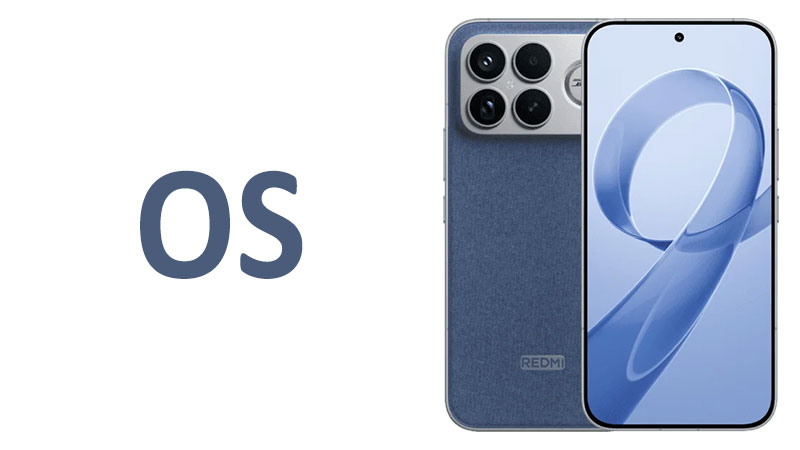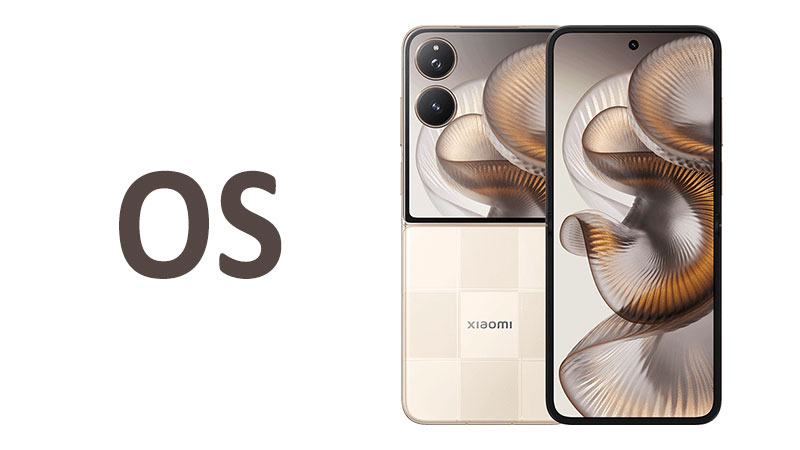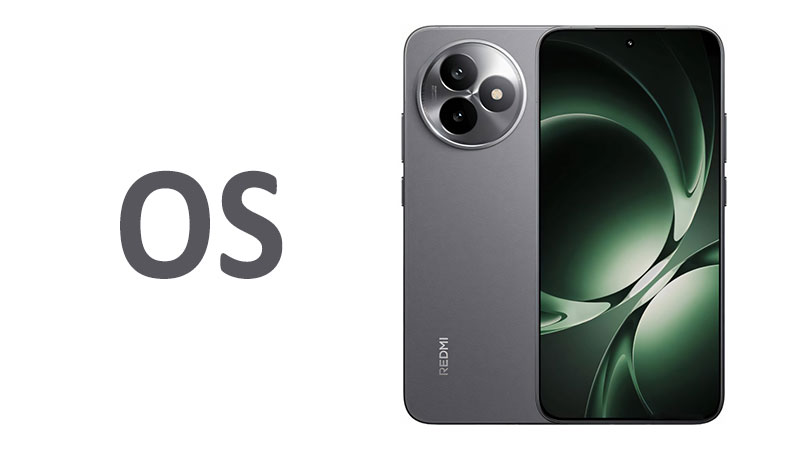The Xiaomi Redmi K90 Pro Max OS is the defining feature of this new flagship device. It dictates everything from performance speed to daily user aesthetics. The combination of Android 16 and HyperOS 3 represents a major strategic shift for Xiaomi. This dual-layer software approach promises superior efficiency and deep ecosystem integration. Understanding this operating system blend is crucial for any potential buyer. It impacts long-term use, security, and access to the latest features. This comprehensive review dives deep into the architecture of the K90 Pro Max OS. We explore its core functionality, innovative user interface, and competitive market standing. This article aims to inform your purchasing decision completely. The software experience is now as important as the hardware itself.
The Foundation: Android 16 on the Redmi K90 Pro Max
Android 16 serves as the robust, secure core for the entire system. It provides the essential framework for all applications and hardware interaction. This version introduces key improvements necessary for modern flagship devices. It is responsible for foundational security, power management, and hardware communication. Xiaomi builds its proprietary experience directly upon this stable foundation. The underlying architecture of Android 16 enables all high-performance tasks. This new iteration guarantees compatibility with the latest global standards.
The Significance of the Android 16 Platform
Android 16 is a leap forward in mobile operating system maturity. It enhances the device’s performance efficiency significantly. This foundational upgrade ensures smoother overall operation. It also delivers necessary, deeper control over system resources. This is particularly important for the high-end K90 Pro Max hardware. Users benefit from improved background task handling instantly. Furthermore, Android 16 refines how apps access system data. This results in a cleaner, faster core experience for all.
Core Performance and Battery Optimization
One major focus of Android 16 is heightened resource optimization. The system actively manages CPU and GPU usage intelligently. This results in far less wasted energy during normal operation. The K90 Pro Max gains measurable battery life improvements from this alone. Apps launch more quickly and run with reduced latency. Memory management also sees significant refinements in this new version. This means the phone handles complex multitasking with greater ease. Ultimately, Android 16 delivers a noticeably snappier, more responsive feel.
New Privacy and Security Protocols
Security is a primary pillar of the Android 16 design philosophy. It introduces stricter permissions for sensitive user data access. Users now have more granular control over what information is shared. New privacy features like enhanced microphone and camera indicators are standard. These visual cues ensure users know when their hardware is being accessed. Android 16 also features updated security patches and faster threat detection. This robust layer of protection safeguards user data continuously.
Developer Impact and App Compatibility
Android 16 brings significant updates to the underlying developer APIs. This helps drive innovation across all third-party applications. Developers can now build more efficient and feature-rich apps easily. Compatibility with older applications remains strong, but optimization is encouraged. The updated framework supports new display and hardware features seamlessly. This ensures that all applications run optimally on the K90 Pro Max’s high-resolution screen. The platform encourages rapid adoption of the newest performance standards.
The Interface Layer: Exploring HyperOS 3
HyperOS 3 is Xiaomi’s highly customized user interface running atop Android 16. This proprietary software layer completely transforms the user experience aesthetically and functionally. It unifies Xiaomi’s entire device ecosystem under one consistent digital roof. HyperOS 3 moves beyond simple visual skinning of the Android core. It is a deeply integrated operating system that prioritizes connectivity and fluidity. This new iteration significantly refines the user-device interaction model.
Introducing the HyperOS 3 Vision
HyperOS 3 represents a major evolution from Xiaomi’s previous MIUI software. The system aims for lightweight operation and maximum efficiency. It focuses on reduced memory usage and faster overall animation speeds. This shift ensures the K90 Pro Max hardware can operate at peak performance effortlessly. The vision is to create a seamless, interconnected experience across all Xiaomi products. This OS acts as a central hub for all personal technology.
Aesthetics, Fluidity, and Design Language
The visual design of HyperOS 3 is notably cleaner and more minimalistic. It adopts a modern, less cluttered aesthetic than its MIUI predecessors. New system-wide fonts and iconography enhance visual consistency significantly. Users will notice incredibly fluid and responsive animations throughout the interface. The system employs natural motion physics, making interactions feel highly tactile. Customization remains a key strength with extensive theme and widget options available. HyperOS 3 makes the device feel distinctly premium and highly personalized.
Cross-Device Ecosystem Integration
A core strength of HyperOS 3 is its deep ecosystem connectivity. The system facilitates effortless linking with Xiaomi smartwatches, tablets, and smart home products. Features like HyperConnect allow rapid file sharing and screen mirroring across devices. Users can manage their entire smart environment directly from the K90 Pro Max. This seamless integration provides significant added convenience and functionality. It turns the smartphone into a truly centralized command center.
Kernel Optimization and Resource Scheduling
HyperOS 3 implements advanced, proprietary kernel optimization techniques. This software actively coordinates system resources with the Android 16 core. It uses intelligent scheduling to allocate power where it is needed most critically. For example, a demanding game receives maximum resources when open and running. This targeted optimization ensures sustained high performance under heavy load conditions. This is a critical factor for the demanding tasks the K90 Pro Max handles. The system delivers power efficiently without generating excessive heat.
Key Features of the K90 Pro Max OS Combination
The combined power of Android 16 and HyperOS 3 unlocks several powerful, flagship-level features. These specific innovations enhance both productivity and multimedia consumption greatly. This synergistic approach allows the phone to fully utilize its high-end processing power. The resulting experience is tailored, efficient, and exceptionally feature-rich.
Advanced AI Integration and Smart Features
HyperOS 3 deeply integrates generative artificial intelligence capabilities. This includes advanced features for on-device image editing and text summarization. The AI engine learns user habits to personalize settings and app suggestions actively. Enhanced voice command processing makes hands-free interaction much more accurate. Android 16 provides the necessary low-level access for these AI models to run efficiently. This tight integration ensures powerful and relevant personalization across the whole system.
Gaming and Dedicated Performance Modes
The K90 Pro Max targets serious mobile gamers with specialized OS features. HyperOS 3 includes a dedicated Game Turbo mode for extreme performance tuning. This mode minimizes background processes and prioritizes network bandwidth for gaming. Android 16’s improved GPU drivers ensure lower rendering latency for smoother frames. Features like a low-latency touch response mode are crucial for competitive play. This combination delivers a truly exceptional, uninterrupted mobile gaming experience.
Revamped Notification and Quick Settings
The notification system in HyperOS 3 is completely redesigned for better clarity. Notifications are grouped more logically, reducing unnecessary visual clutter significantly. The quick settings panel offers greater customization options and improved accessibility. Users can now easily manage device connectivity and security features. These subtle, crucial UI improvements lead to a faster, less frustrating daily workflow. Quick access and clean presentation are the main goals of this revamp.
Advanced Haptics and Feedback System
HyperOS 3 includes specialized software to drive the phone’s advanced linear vibration motor. This results in highly precise and customizable tactile feedback. Users can feel nuanced haptic responses for different system actions and notifications. The touch feedback feels more realistic, enhancing the overall user experience greatly. Android 16 provides the low-level support for this complex motor control. This attention to tactile detail adds a layer of refinement to the OS interactions.
Specialized Comparisons and Competitive Positioning
The Xiaomi Redmi K90 Pro Max OS must stand out against fierce competition. Comparing Android 16 and HyperOS 3 with rivals highlights its unique value proposition. This comparison focuses on aesthetic, functional, and ecosystem differences. Buyers need to see where this software package truly excels in the market.
Vs. Previous Generation (K80 Series/MIUI 15 Equivalent)
The K90 Pro Max OS offers dramatic improvements over the previous K80 series software. The jump from the assumed MIUI 15 to HyperOS 3 is significant in terms of code efficiency. HyperOS 3 is notably lighter and faster, reducing overall system overhead considerably. Previous versions often suffered from performance dips under heavy load, but HyperOS 3 fixes this. The aesthetic change is also substantial, moving towards a much cleaner, more modern look. Cross-device connectivity is far more robust and reliable on the new platform. Users upgrading will experience a complete generational shift in software quality.
Vs. Key Competitors (Samsung’s One UI and Stock Android)
Compared to Samsung’s One UI, HyperOS 3 offers greater customization depth. One UI is robust, but HyperOS 3 often feels more lightweight and less resource-intensive. Both systems provide extensive features, but Xiaomi emphasizes seamless cross-product integration.
Against Stock Android from Google Pixel phones, the difference is clear. Stock Android prioritizes minimalism and the fastest possible Android updates. HyperOS 3, however, provides a far more tailored and feature-rich user experience. Xiaomi’s extensive tools for optimization and gaming are entirely missing from Stock Android. The K90 Pro Max OS is for users who prefer power and customization over pure, untouched simplicity.
Evaluating the Pros and Cons of the K90 Pro Max OS
Every operating system involves a series of trade-offs in its design philosophy. The combination of Android 16 and HyperOS 3 is no exception to this rule. A balanced look at its advantages and disadvantages is essential for the final evaluation.
Key Advantages (Pros)
- Exceptional Performance: The lightweight HyperOS 3 combined with Android 16’s efficiency ensures sustained speed.
- Deep Customization: Users can extensively personalize the device, from themes to control center layouts.
- Robust Ecosystem: HyperConnect enables seamless integration with a wide range of Xiaomi smart products.
- Advanced Gaming Tools: Dedicated performance modes give gamers a significant competitive edge effectively.
- Modern Aesthetics: The clean, fluid design of HyperOS 3 makes daily interaction highly appealing visually.
Potential Drawbacks (Cons)
- Pre-installed Software: Xiaomi often includes several pre-installed applications, which some users consider bloatware.
- Global Update Consistency: The pace of major OS updates can vary significantly between different global regions.
- Learning Curve: Users migrating from Stock Android might need time to adjust to Xiaomi’s unique interface and settings.
- Regional Feature Parity: Certain advanced HyperOS features might initially be exclusive to the Chinese version of the OS.
Essential Buyer’s Guide: What Readers Must Know
Before committing to the Xiaomi Redmi K90 Pro Max, potential buyers should understand its long-term software implications. The OS choice is a long-term commitment that affects future functionality and security. These are crucial points for every prospective owner to fully consider.
Software Update and Security Commitments
Buyers must carefully research Xiaomi’s commitment to major Android and HyperOS updates. Flagship devices typically receive three to four years of major OS upgrades. Security patches, which are critical, should extend for at least five years in total. A strong update commitment protects the phone’s value and ensures long-term usability effectively. The K90 Pro Max requires robust support due to its flagship pricing and positioning.
Understanding Global vs. China ROM
Xiaomi devices often ship with different software versions based on the target market. The China ROM sometimes includes more features but lacks necessary Google services. The Global ROM includes all Google apps and services but may be delayed in receiving updates. Buyers should confirm the specific software version before making any purchase decision. Choosing the correct ROM ensures proper app functionality and language support.
Customization and User Control
The K90 Pro Max OS is best for users who appreciate extensive user control and high levels of customization. If you prefer a locked-down, minimalist phone experience, this OS might feel overwhelming. Embrace the themes, widgets, and detailed settings to fully maximize the software’s potential. The operating system invites users to personalize the experience truly. This level of control is a major selling point for power users specifically.
The Ecosystem Advantage
Consider the full range of Xiaomi products you currently own or plan to purchase later. The true power of HyperOS 3 lies in its seamless, effortless connectivity between devices. If you use a Xiaomi tablet or smart watch, the integration is extremely valuable. The OS acts as a unified digital ecosystem, boosting overall productivity greatly. This holistic approach offers significant added value over competitor platforms instantly.
Conclusion: Guiding the Final Purchase Decision
The Xiaomi Redmi K90 Pro Max OS, powered by Android 16 and HyperOS 3, is a compelling software package. It successfully delivers a blend of high performance, deep feature customization, and strong ecosystem connectivity. The underlying Android 16 core guarantees stability and necessary security protocols. HyperOS 3 transforms the user experience with its fluid animations and modern, lightweight aesthetic.
The OS is specifically designed to maximize the K90 Pro Max’s flagship hardware capabilities. This is particularly evident in the dedicated performance and AI features effectively. While some users might find the initial interface busy, the benefits for power users are undeniable. Buyers prioritizing speed, customization, and seamless smart-home integration should strongly choose this device. The software makes this phone a powerful contender in the premium Android market segment. It is an excellent, long-term choice for demanding mobile users.
Frequently Asked Questions (FAQ)
Which version of Android is included with the K90 Pro Max?
The Xiaomi Redmi K90 Pro Max ships with the latest foundational release, Android 16.
Is HyperOS 3 the same as Xiaomi’s previous MIUI software?
No. HyperOS 3 is an entirely new, lighter, and more efficient operating system replacing the older MIUI.
Does the K90 Pro Max OS support cross-device functionality?
Yes. HyperOS 3 includes HyperConnect, allowing seamless integration with other Xiaomi devices.
Are the gaming performance features better on this OS version?
Definitely. The combination of Android 16 drivers and HyperOS 3’s Game Turbo ensures peak gaming efficiency.
Will the Android 16 security updates be fast on HyperOS 3?
Xiaomi aims to deliver regular, timely security patches, leveraging the core stability of Android 16 effectively.



